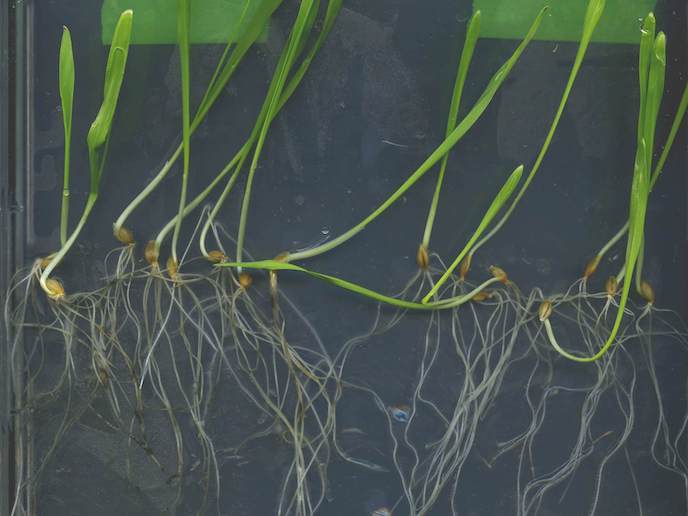How plant cells communicate with each other
For multicellular organisms to survive, the cells must be able to communicate with each other. This crosstalk organises activities in individual cells, and provides support to the overall organism. In plants, communication is done through unique microscopic structures known as plasmodesmata (PD) pores, holes in the wall lined by the plasma membrane (PM) of each cell which connect to the next cell. Yet how exactly PD signal to coordinate their actions and responses has been unclear. Answers may be found in the endoplasmic reticulum (ER), a networked structure which runs through the pores and is tightly tethered to the cell PM with a series of ‘spokes’. “The function of this unique membrane organisation, with its closely apposed membranes, had remained unknown for decades,” says Emmanuelle Bayer, research director in the Laboratory of Membrane Biogenesis at the University of Bordeaux. In the BRIDGING project, which was funded by the European Research Council, Bayer and her colleagues used advanced modelling and ultra-high-resolution 3D imaging to investigate this curious cellular organisation, to find out whether the tethering between the ER and the membrane is central to PD function. “This work marks two significant breakthroughs,” adds Bayer. “It unfolds a fundamental question of how plant cells ‘fail’ cytokinesis to promote communication, and points to an unforeseen and central role of the ER in orchestrating intercellular continuity.”
Identifying candidate tether proteins
The researchers first performed proteomic analysis, a process which identifies and quantifies proteins. Using this on PD, the team could find candidate tether proteins, which were specific to PD and had the structural feature needed to bridge over the two membranes. “We then showed that these proteins called MCTPs (multiple C2 domain transmembrane domain protein) were indeed localised to plasmodesmata in plants,” explains Bayer. “Their loss of function induces strong developmental and growth-related defects in Arabidopsis – our model system.” The researchers then used a combination of: electron tomography to investigate the impact of MCTP loss of function on PD internal structure; molecular dynamics to map MCTP-PM interaction; microscopic cell biology to trace molecular flow in plants; and biochemistry.
A paradigm shift in the concept of plant communication
The project results led to a conceptual shift in our understanding of plant communication, firstly of the regulatory mechanisms governing cell-cell trafficking through PD. Over the past 5 years, with the support of EU funding, Bayer’s group discovered that PD act as unconventional membrane contact sites (MCSs), which exist in other organisms, but in plants uniquely serve intercellular communication. “Our findings challenge current models that emphasise callose as the main regulators of cell-cell trafficking, and expand MCS functions from intracellular to intercellular communication,” Bayer explains. The second major finding was that when plant cells divide, the ER actively prevents the physical separation of dividing cells, enabling the formation of intercellular bridges across the division wall.
Bringing plasmodesmata into the spotlight
The project’s new research angle on the role of MCS in intercellular communication has gained significant recognition across several fields, with many teams now investigating plasmodesmata under an MCS spectrum – including in the non-plant broader membrane biology community. “Combined with our recent work on incomplete cell division, our data also has highlighted the importance of the ER,” notes Bayer. “In the coming years, I would like to focus my research on the role of the ER in cell-cell communication.”
Keywords
BRIDGING, plant, communication, cells, plasmodesmata, cell division, membranes





